Are we on the brink of a transportation revolution? As we look ahead to 2025, the automotive world is buzzing with excitement. Car news 2025 promises a thrilling mix of innovation and sustainability, setting the stage for a new era of mobility.
The future of vehicles is evolving at breakneck speed. From electric powertrains to self-driving capabilities, automotive technology is pushing boundaries we once thought impossible. Industry giants and startups alike are racing to unveil groundbreaking concepts that will reshape our roads and cities.
In the coming years, we’ll see a surge in eco-friendly options, advanced safety features, and connected car systems that seamlessly integrate with our digital lives. The automotive landscape is set for a major overhaul, with sustainability and innovation at its core.
Key Takeaways
- Electric vehicles will dominate the market by 2025
- Autonomous driving technology will reach new milestones
- Connected car features will become standard
- Sustainability will drive major industry shifts
- New safety innovations will enhance road security
- The concept of car ownership may evolve significantly
Car News 2025: Latest Industry Updates and Predictions
The automotive world is getting ready for a big change in 2025. Experts are excited about new events and launches that will change our roads. Let’s explore the forecasts and trends that will shape the future of cars.
Major Automotive Events and Launches
Car lovers should get ready for some big reveals. Top car makers are preparing to show off new models. These cars will have better electric power, self-driving tech, and green materials.
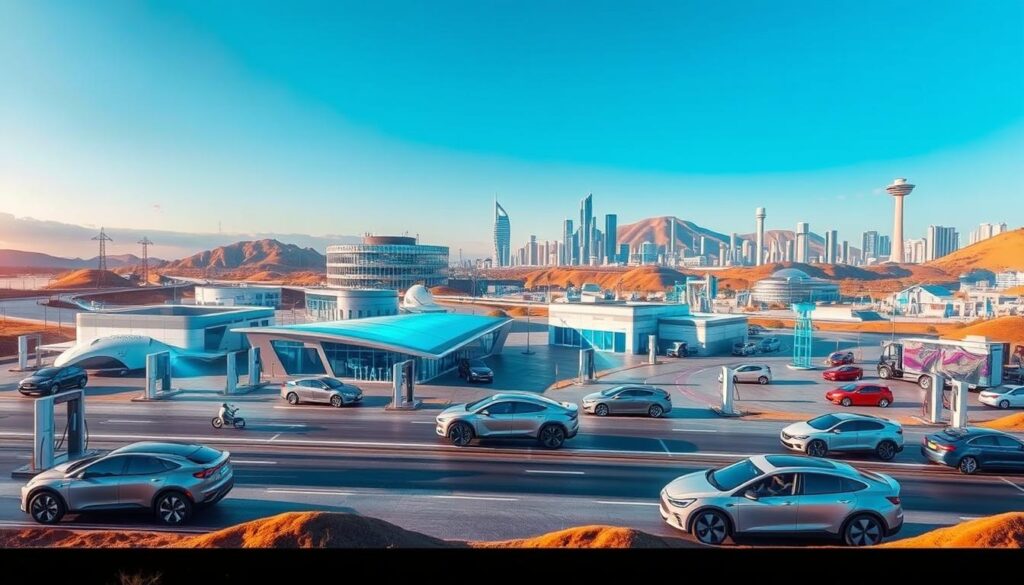
Industry Growth Forecasts
Experts say the car industry will grow fast, thanks to new tech. Companies will spend more on research and development. This growth is similar to other tech fields.
Global Market Trends
Car designs are moving towards being green and connected. Electric cars are becoming more popular, with more charging spots. Cars are also getting smarter, with AI and tech like Nvidia’s Blackwell chip.
“The automotive industry is on the cusp of a revolution. We’re not just changing how cars look, but how they function and interact with the world around them.”
Looking ahead to 2025, the car world is set for big changes. These updates will change how we see cars and travel.
Electric Vehicle Revolution: Breaking New Ground
The electric car industry is gearing up for a big year in 2025. Car makers are pouring money into making more electric vehicles (EVs). This is to meet the demand from people and to follow strict rules about the environment. It’s changing how cars are made.
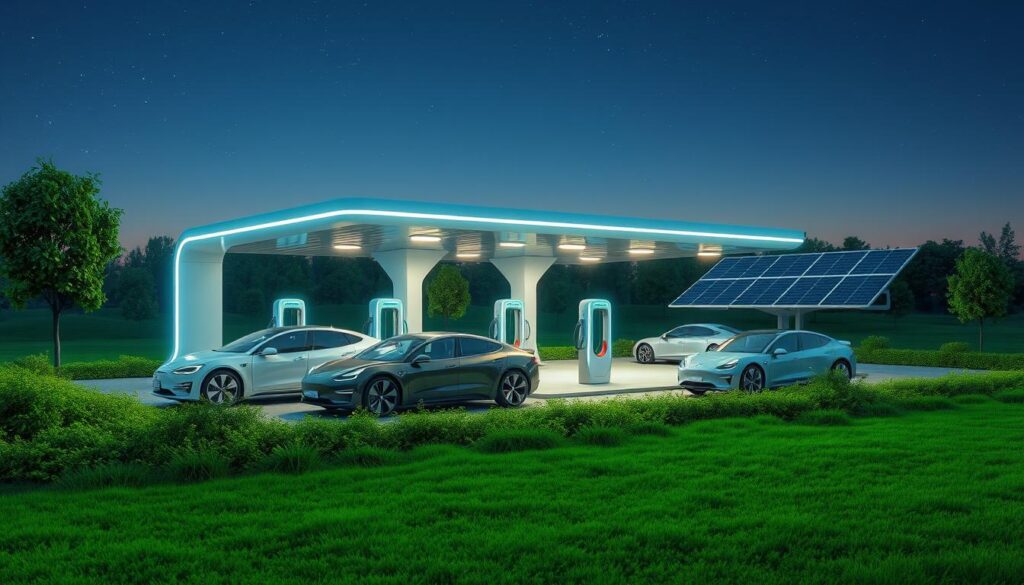
BMW Group is making a big change at its biggest factory in Spartanburg, South Carolina. They’re changing it to make more EVs. This move is a big step towards electric cars in the U.S. It will also create more jobs and help local economies.
Better batteries are coming, which will change how we use EVs. New cars will go farther and perform better. This will make electric cars more attractive to more people.
“The electric vehicle market is projected to expand significantly in 2025, with new models offering improved range and performance.”
Building more charging stations is key to this growth. Charging spots are popping up everywhere, making long trips in electric cars easier. This helps reach the goal of using cars in a way that’s better for the planet.
- Improved battery technology
- Expanded charging networks
- Increased production capacity
- Greater range and performance
The electric car movement is speeding up, and a green future is closer than ever. The work done in 2025 will help make cars cleaner and greener for years to come.
Autonomous Driving Technology Advancements
The world of self-driving cars is changing fast. New tech is making roads safer and rides smoother. We’re looking forward to big changes by 2025.
Self-Driving Capabilities
Self-driving cars are getting better. They can handle tough driving tasks now. Thanks to advanced sensors and AI, they can drive safely.
Some cars can even park themselves or change lanes without help. It’s amazing to see how far they’ve come.
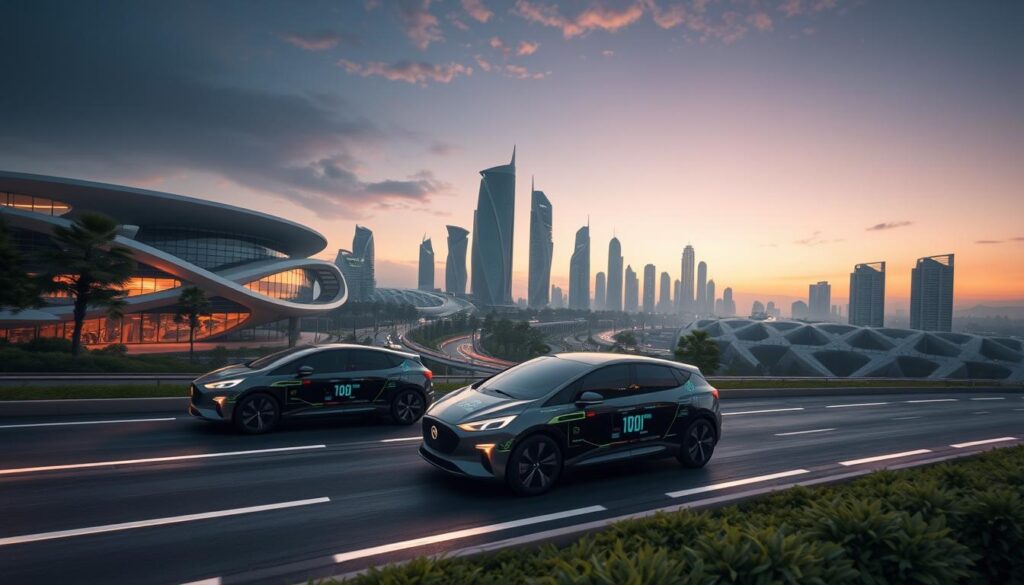
Safety Innovations
Safety is key in self-driving cars. New features are being added to make them safer. These include:
- Better obstacle detection
- Improved emergency braking
- Enhanced night vision capabilities
These updates aim to cut down on accidents and save lives. AI in car customization is helping make vehicles safer and more tailored to each driver.
Regulatory Framework Updates
Laws are evolving to match self-driving tech. Governments are creating new rules for these cars. These rules will cover testing, insurance, and liability.
The goal is to ensure self-driving cars are safe for all. It’s a big step towards a safer future.
“Self-driving cars are not just the future; they’re becoming our present. We’re seeing rapid advancements that will change how we think about transportation.”
As we get closer to 2025, self-driving tech is breaking new ground. With better safety features and smarter driving, the future of travel is looking bright and innovative.
Sustainable Transportation Solutions
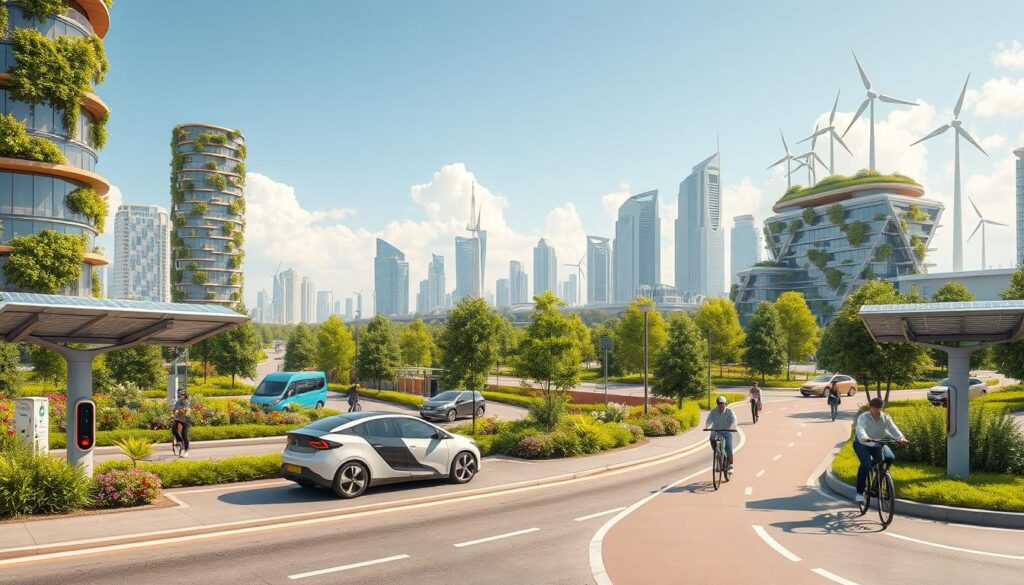
The car industry is moving towards greener ways. Electric vehicles (EVs) are at the forefront, with more expected on the roads. This growth means we need more places to charge them.
Public EV chargers are becoming key. A dual-unit charger can charge two cars at once. But, they cost around $7,500 a year to maintain. Communities are looking at different ways to fund them:
- Partnerships with local businesses
- Grants
- Sponsorships
- Community donations
Getting people involved is crucial for green transport. Residents’ opinions help decide where and how EV chargers are set up.
But EVs are just the start. The growth in electric vehicle infrastructure is sparking new ideas. From smart roads to eco-friendly car tweaks, the industry is racing towards a greener future.
Keeping these green projects affordable is essential. As cities go green, they’re working on lasting, community-backed plans. These plans aim to make our cars cleaner and more efficient for the long haul.
Connected Car Technologies and Smart Features
Connected car technology is changing the car world. Cars are getting smarter, offering more than just a ride. They’re turning into mobile entertainment centers and communication hubs.
In-Car Entertainment Systems
Today’s cars have advanced infotainment systems. These systems let you listen to music, podcasts, and get directions. Some even stream videos for passengers. The aim is to make every trip fun and useful.
Vehicle-to-Everything Communication
V2X communication is a big leap in car tech. It lets cars talk to roads, other cars, and even people walking. This tech boosts safety and makes traffic smoother. Electric cars are at the forefront of this, with Tesla and Nissan leading the charge.
Digital Integration Advances
Cars are now part of our digital lives. Many cars come with smartphone integration. Voice assistants like Siri and Google Assistant are making their way into cars. This makes it easier to stay connected while driving.
- Real-time traffic updates and route optimization
- Predictive maintenance alerts
- Personalized driving experiences
- Enhanced safety features through data sharing
As car tech keeps improving, our vehicles will get even smarter. They’ll not only take us places but also keep us entertained, informed, and safe.
Design Trends Reshaping the Auto Industry
Vehicle design trends are changing fast, with new car innovations leading the way. The auto world is embracing futuristic ideas that mix looks and usefulness. Now, aerodynamics, green tech, and how cars feel to use are top priorities for makers.
Concept cars are breaking new ground, showing off designs that are both stylish and efficient. Inside, cars are getting tech upgrades and new layouts to meet what people want. Comfort and being connected are key in these updates.
The Polestar 4 is a great example of new design. It’s coming out in 2024 and is making waves with its cool features. The Polestar 4 will use AI to make driving better and more fun. It also has solar tech, cutting down on the need for charging.
These new designs fit with the trend of fixing up classic cars. Fans are mixing old looks with new, making cars that are both old and new.
- AI-driven systems learning from user behaviors
- Solar energy integration for reduced environmental impact
- Personalized driving suggestions for optimized efficiency
The auto world is always changing, and these new ideas are setting high standards. They’re not just changing car designs but also leading to a greener and more tech-savvy future in travel.
Advanced Safety Features and Innovations
Vehicle safety features have made huge strides in recent years. The car industry is working hard to make roads safer for all. Let’s explore some top-notch safety features that are changing the face of driving.
Collision Prevention Systems
Car makers are adding smart collision prevention systems to their cars. These systems use sensors and cameras to spot dangers on the road. If a hazard is found, the car can automatically brake or steer clear of it.
Driver Assistance Technologies
Driver assistance tech is getting smarter. Features like lane departure warnings, adaptive cruise control, and blind-spot monitoring are common in new cars. These help drivers stay focused and make safer choices.
As these systems get better, they’re leading the way to self-driving cars.
Emergency Response Integration
Now, cars can automatically call for help in emergencies. This quick action can be life-saving. The system sends the exact location and details of the crash.
While these new features are thrilling, there are some safety worries. A study found that 90% of electric cars use batteries that might catch fire. But, car makers are looking into safer options like lithium iron phosphate batteries.
As safety features keep improving, we can expect even safer roads ahead.
Hybrid Vehicle Developments
Hybrid vehicles are at the forefront of sustainable mobility. They combine electric and combustion engines for better fuel efficiency. The newest models perform well and are kinder to the environment.
Plug-in hybrids are becoming more popular. They let drivers use electric or gas power. This makes them a good choice for those moving to greener cars.
New hybrid tech has made big strides. Engineers have boosted efficiency, safety, and sound quality by up to 30%. This change is making cars better and helping us move towards a greener future.
“Integration of AI into product design can result in immediate multi-physics insights, expedited design iterations, and optimized product development.”
AI has changed how hybrid cars are made. What used to take 12 hours now takes seconds. This fast progress is speeding up the improvement of hybrid cars, leading us to a cleaner tomorrow.
- Over 70 major companies rely on AI platforms to reduce product development times
- Simulations can be accelerated by up to 10 times
- Plug-in hybrids offer flexibility between electric and gas power
As hybrid cars keep getting better, they’re leading us to a new era of green mobility. With every new innovation, we’re getting closer to a world where eco-friendly cars are the standard, not the exception.
Concept Cars Setting Future Standards
Concept cars are changing the game in car design. They show off the latest in car tech and design. These cars might be what we drive in the future.
Revolutionary Designs
Concept cars are making a big splash with their unique looks. They have sleek designs, big windows, and smooth exteriors. Some even try out new layouts, like three wheels or modular designs.
Performance Innovations
Concept cars are also redefining how fast and quiet cars can be. Electric cars are setting speed records and are super quiet. They use light materials and smart aerodynamics for better performance.
Eco-Friendly Solutions
Many concept cars focus on being green. They use new tech like hydrogen fuel cells and solar panels. Their interiors use eco-friendly materials, keeping luxury without harming the planet.
“Concept cars are not just about looks. They’re rolling laboratories that test the limits of what’s possible in automotive engineering.”
Concept cars are more than just cool designs. They inspire real cars and drive the industry forward. As car tech keeps getting better, the line between fantasy and reality in car design gets smaller.
Market Competition and Brand Strategies
The automotive industry is getting ready for intense competition in 2025. Brands are changing their plans to lead in the future vehicle market. Traditional carmakers are facing new challenges from electric and self-driving car startups.
Forecasts show a move towards sustainability and tech leadership. Companies are working to improve customer experiences to stand out. This is key as Việt Nam’s GDP growth rate hit 7.09%, beating targets and showing strong economic growth.
Brand strategies are changing fast. Carmakers are spending a lot on electric vehicle tech and self-driving features. They’re also looking into new business models, like subscription services and mobility solutions, to make more money.
“In the race for future vehicles, brands that prioritize innovation and customer-centric approaches will lead the pack.”
Key trends in market competition include:
- More focus on electric and hybrid vehicles
- Advanced driver assistance systems
- Connected car technologies
- Sustainable manufacturing processes
As the industry changes, companies are also rethinking their supply chains and production plans. This change is partly due to global economic shifts and new import rules, which could affect trade and exports.
Infrastructure Development for Future Vehicles
Cities are changing to meet new transportation needs as car tech improves. The move towards green transport is leading to big changes in city planning.
Charging Networks
More people are choosing electric cars, leading to a fast growth in charging spots. Cities are adding stations in parking lots, malls, and on streets. This is key for supporting the growing number of electric vehicles.
Smart Road Systems
Roads are becoming smarter to match car tech progress. New systems include sensors for traffic control and connected car tech. These aim to cut down on traffic jams and make roads safer for everyone.
Urban Planning Integration
Urban planners are redesigning cities for future cars. They’re creating special lanes for self-driving cars and updating intersections for better traffic flow. Some cities are even testing out car-free areas to encourage walking and biking.
- 50% of voters find new bike lanes somewhat worthwhile
- 24% consider them unnecessary
- Support is strongest among Democrats, Black voters, and those under 55
This poll shows the ongoing debate on balancing different transport needs in cities. As cities adapt to green transport and car tech, finding agreement among all groups is a big challenge.
Conclusion
Looking ahead to 2025, the car world is buzzing with excitement. Electric cars are leading the charge, and self-driving cars are changing how we travel. These new technologies are making our daily commutes much more interesting.
Car makers are now focusing on making cars that are better for the planet. Cars are getting smarter, with advanced technology for drivers. And, safety features are improving, making our roads safer for all.
2025 is shaping up to be a big year for cars. We’ll see everything from futuristic concept cars to practical city vehicles. As cities welcome these new cars, we’re in for a big change on the roads. Get ready – the future of driving is almost here!

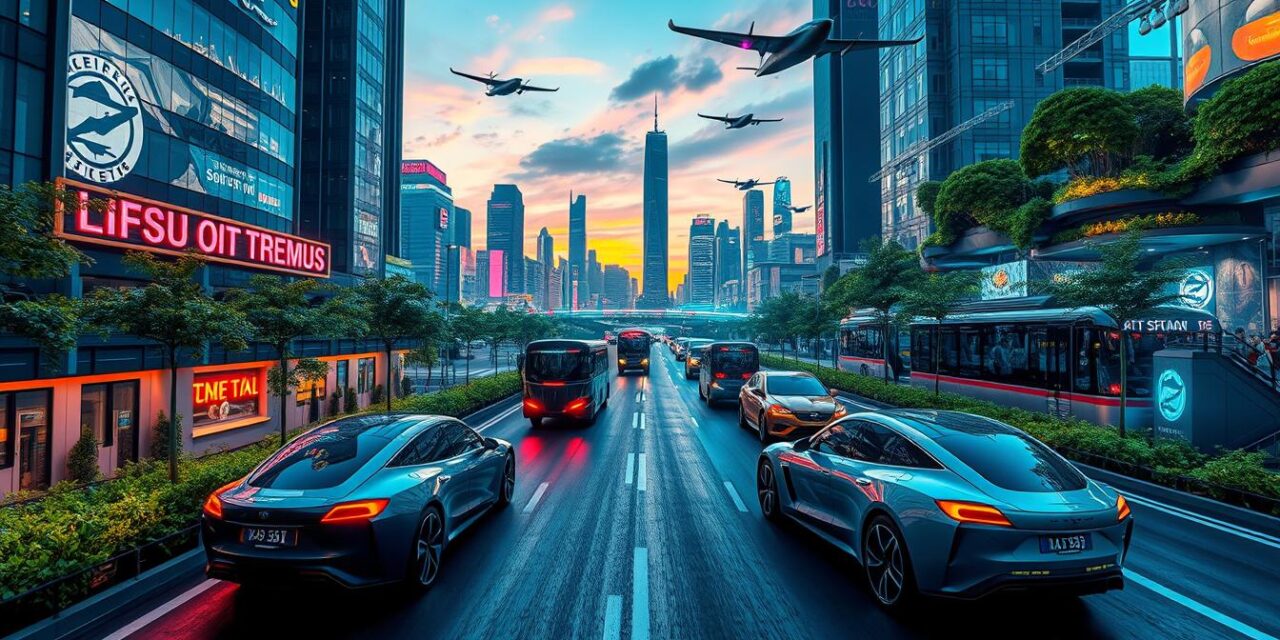
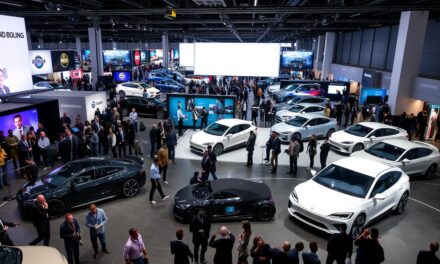

Recent Comments